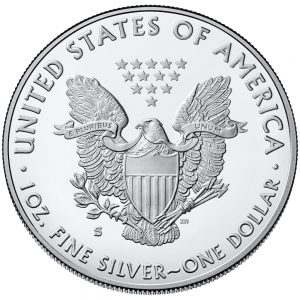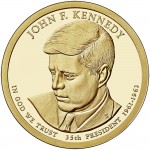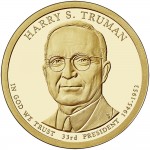Screwed again by the U.S. Mint
The knock on the door was a few moments before noon. It was a customer with an appointment to pick up an order. The door was open, the customer picked up their item and left. Before wiping down the table, I went back to the computer.
A tap on the keyboard brought up the password prompt to end the screensaver. When the screen cleared, the clock in the upper-right read 12:04. A quick click and there was the message, “This product is currently unavailable.”
Once again, a limited edition collectible out of reach of a collector. With the popularity of the American Silver Eagle Proof coins and only 327,440 to be off ered, the U.S. Mint set a “Household Order Limit” of 99. How many dealers with dedicated staff were able to purchase their 99 coin limit?
Instead of giving the collectors a chance, the U.S. Mint set the rules to favor the dealers and those whose work requirements took them away from the computer.
With all of the past problems and the tepid response from Director David Ryder, there is little hope that the U.S. Mint will fix these problems. Ryder either does not care about the collector or does not have the competence to fix the problems. Although the website worked, the policies favored the dealers and did nothing for the collectors.
It is time for Ryder to descend from his ivory tower to understand how the collectors are treated. If he refuses to do something about it, he should hand in his resignation to allow the president to appoint someone who knows what they are doing.
Summary of February 2015 coin-related legislation
 March comes in like a lion in many ways, especially in Washington, D.C. Between the weather, fighting over the budget, or an invitation of a world leader, there has been no shortage of roaring emanating from either end of Pennsylvania Avenue.
March comes in like a lion in many ways, especially in Washington, D.C. Between the weather, fighting over the budget, or an invitation of a world leader, there has been no shortage of roaring emanating from either end of Pennsylvania Avenue.
In the mean time, there was only one bill introduced in February:
H.R. 893: Boys Town Centennial Commemorative Coin Act
ANA Settles with Shepherd
In June 2013, Shepherd filed a lawsuit claiming that the ANA violated the Racketeer Influenced and Corrupt Organization (RICO) laws alleging that the ANA has committed are racketeering, theft, and fraud. Shepherd also alleged that a few employees of the ANA and members of the Board of Governors made up stories about Shepherd in order to find a way to relieve him of his duties for cause so they can invalidate his contract
Early in January, Mike Ellis resigned from the Board of Governors while the ANA continued to wrestle with this lawsuit. As part of the reporting, ANA President Walt Ostromecki was quoted as saying, “He realized he had made a mistake and chose to step down from the board.”
A source speaking on the condition of anonymity as reported that Ellis allegedly had worked behind the scenes against Shepherd to rally ANA employees to work against Shepherd in order to create a hostile working environment for Shepherd. The move was allegedly designed to make Shepherd look incompetent in order to get him fired.The source was not sure whether Ellis initiated this or it was initiated by the ANA employees involved, but it was alleged that Ellis was the ring-leader from the Board’s perspective. It was also alleged that while Ellis was the most active it was suspected that other members of the Board had knowledge of his actions.
The same source also alleged that Ellis participated in creating the environment that caused Shepherd’s successor, Jeff Shevlin, to be fired using the same approach.
According to the source, the crux of the issue is that there allegedly was a faction at the ANA Colorado Springs Headquarters who did not want to work. Both Shepherd and Shevlin tried to reorganize the headquarters staff in order to create efficiencies that were not met with positive reactions. While the list of allegations were pretty comprehensive, it included claims that employees worked flexible hours against workplace policies, abused other workplace policies, and used ANA equipment for personal business including for outside income.
Ellis was only part of the problem. If the source is true, there are employees in Colorado Springs that should be disciplined for their part in creating the hostile environment for both Shepherd and Shevlin. We may never know what changes will be made in Colorado Springs because of both federal and Colorado employment privacy laws. However, the ANA Board of Governors should be open with the membership regarding how they are dealing with the ANA permanent employees.
While it appears the situation has settled with Kim Kiick as the Executive Director, the ANA has over 20 years of problems with Executive Directors. Maybe it is time for operations at the ANA Headquarters be revamped into a more professional organization with workplace rules and policies rather than being a club where people get paid.
Mike Ellis image courtesy of Numismatic News.
POLL: Are you collecting the Kennedy dollar?
Let’s hear what you think. If you want, you can add a comment to this post. To make sure your comment is published below, keep it “family friendly” and do not spam. Even if you disagree with me, I would love to know what you think!
Will you buy the John F. Kennedy $1 Coin?
Total Voters: 48
Congress should leave well enough alone
Case-in-point, Sen. David Vitter (R-LA) introduced S. 95, a bill “[To] Terminate the $1 presidential coin program.” Like the knee jerking to copy and paste old bills, Vitter dusted off his previous attempt (S. 94 in the 113th Congress and S. 1385 in the 112th Congress) and dropped it in the hopper more in an attempt to make it look like he is doing something when all he is doing is annoying collectors.
By anyone’s measure, the Presidential $1 Coin program has not been a success. While it was fundamentally a great idea, the problem with having it gain wider circulation is that congress did not pass the appropriate laws to discontinue printing and distribution of the one dollar Federal Reserve note. When given a choice, people have chosen to carry the note rather than the coin.
In 2011, National Public Radio published a story complete with errors that caused a public outcry. But one aspect of the story was true: because the presidential dollar did not circulate, they were accumulating in the coin storage rooms at the Federal Reserve. When the story went vial, members of congress from both sides of the aisle seemed to fall all over themselves to appear like they were doing something and introduced go-nowhere bills to end the program.
Acting as the only adult in the room, then Secretary of the Treasury Tim Geithner, ordered that the production of all dollar coins, including the Native American dollar, be reduced to levels to only satisfy the collector market unless the Federal Reserve ordered more coins.
Four years later, the U.S. Mint is in the second-to-last year of the program. In 2015, the U.S. Mint is scheduled to release coins honoring Presidents Harry S. Truman, Dwight D. Eisenhower, John F. Kennedy, and Lyndon B. Johnson. In fact, the Kennedy dollar and First Spouse gold coin featuring Jacqueline Kennedy are anticipate being so popular, the U.S. Mint will produce more of those coins including additional of the accompanying Jacqueline Kennedy medals.
At this point, the Presidential Dollar, First Spouse gold coins, and the First Spouse medals are a collector’s series that is near its end. In 2016, the U.S. Mint is scheduled to issue coins in honor of Presidents Richard M. Nixon and Gerald R. Ford. By law, because President Jimmy Carter is still living, he is not allowed to appear on a coin. Even though President Ronald Reagan is deceased, the coins have to be in order making the program end with Ford.
With six coins to go in the series and four years after the fury, why is Vitter introducing this bill now? Costs have been contained with the reduction of circulation. In fact, reviewing the annual reports, the Presidential $1 program has increased in sales as more of the better known 20th Century presidents have been featured.
Rather than leave well enough alone, Vitter joins the others in congress of not thinking and dropping a bill into the hopper that he might think has value to a small percentage of a perceived base but fails to look at the bigger picture. This is part of their collective myopia that keeps congress’s approval ratings in the single digits.
If Vitter did this for show, he has wasted the time of his staff for having to prepare the bill for submitting; he wasted the time and resources of the Senate clerk for having to record the bill; and he wasted the resources that will have to go into the various mechanisms for tracking the bill. Anytime a member of congress wastes resources they are wasting money.
As a federal government employee, Vitter, his staff, and the congressional support services are paid for out of your taxpayer dollars while the U.S. Mint is making more profit by maintain this program than it would otherwise. If members of congress would look beyond any ideology they pretend to profess and engage their brains when they do something like this, then maybe they might find their approval ratings at least higher than the current temperature in Washington, D.C.
Dear Congress, Stop dirtying our commemoratives
Time and again, we hear that congress wants the government to save money. They want agencies to reduce costs and build efficiencies. How can agencies save money when members of congress introduce legislation that is counter to those goals?
Congress has been told that the U.S. Mint could save money if they standardized gold coins to 24-karat coins and silver to at least .999 fine quality. Aside from making the coins more attractive to more buyers including investors, the U.S. Mint does not have to pay more for someone to “dirty” the metals to create planchets that contain 90-percent of the metals.
Modern manufacturing methods are geared to process mined metals to create purer metals. In order for the gold or silver to be used to make the 90-percent alloy, it has to be dirtied with another metal, such as copper, before creating the planchets. While it makes the metals cheaper, the process increases the costs per planchet because of the extra work involved.
Congress exasperates this problem by not listening to the U.S. Mint and doing a virtual copy-and-paste from previous bills that says $5 gold commemoratives be made from 90-percent gold and silver dollars from 90-percent silver.
Rather than listening to the U.S. Mint, Rep. Sean Maloney (D-NY), or a non-responsive staffer in his office, did a copy-and-paste of previous commemorative bills to introduce the National Purple Heart Hall of Honor Commemorative Coin Act (H.R. 358) that calls for a 90-percent gold $5 coin and a 90-percent silver dollar.
Regardless of how one feels about the use of commemorative coins for fundraising, if congress is going to authorize a commemorative coin, why not allow the U.S. Mint to take advantage to more efficient manufacturing and stop making them dirty the metals?
It is possible that if the U.S. Mint could create commemorative coins worthy of being on par with investor grade coins, not only could they save money in the manufacturing process which could lower the costs of the coins, but they could sell more coins. If the U.S. Mint sells more coins they could collect more of the surcharges to benefit their intended causes.
If congress really cared about saving money and increasing efficiency in the government, members like Rep. Maloney will look beyond rhetoric and actually do something, no matter how simple it is.
Up next, why some members of congress should leave well enough alone!






